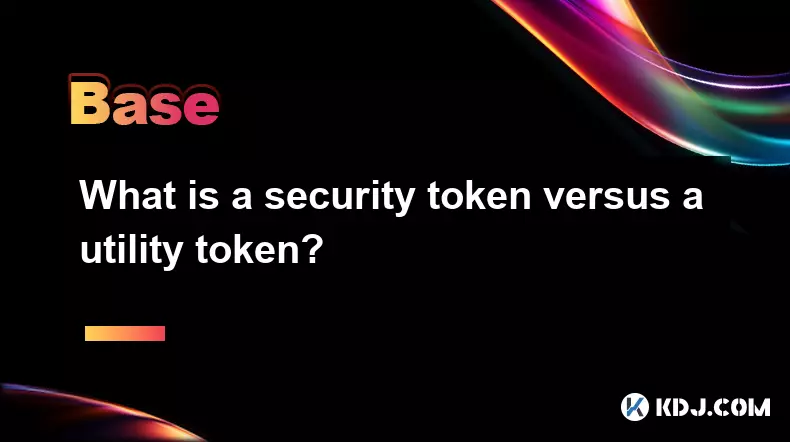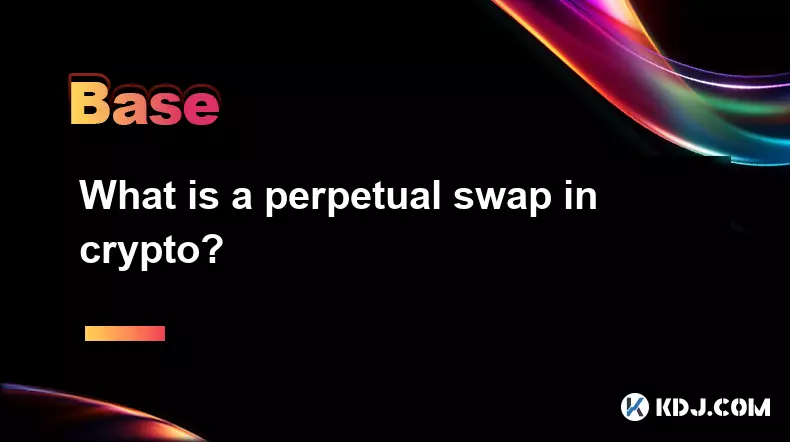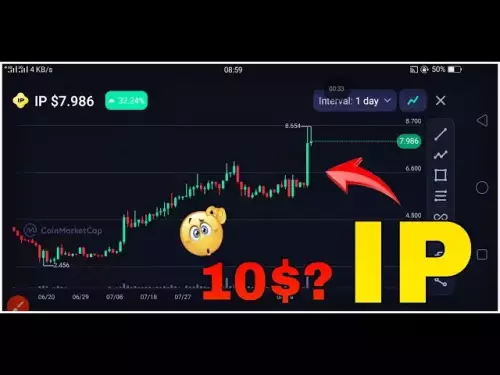-
 Bitcoin
Bitcoin $108600
0.02% -
 Ethereum
Ethereum $4471
1.81% -
 XRP
XRP $2.835
0.97% -
 Tether USDt
Tether USDt $1.000
0.02% -
 BNB
BNB $860.2
0.05% -
 Solana
Solana $204.6
0.94% -
 USDC
USDC $0.0000
0.03% -
 Dogecoin
Dogecoin $0.2179
0.91% -
 TRON
TRON $0.3422
0.51% -
 Cardano
Cardano $0.8272
-0.58% -
 Chainlink
Chainlink $23.76
1.68% -
 Hyperliquid
Hyperliquid $44.57
2.33% -
 Ethena USDe
Ethena USDe $1.000
-0.02% -
 Sui
Sui $3.324
-0.22% -
 Stellar
Stellar $0.3601
0.75% -
 Bitcoin Cash
Bitcoin Cash $549.9
3.40% -
 Avalanche
Avalanche $24.08
2.18% -
 Cronos
Cronos $0.2921
-8.45% -
 Hedera
Hedera $0.2263
0.73% -
 UNUS SED LEO
UNUS SED LEO $9.585
0.89% -
 Litecoin
Litecoin $111.5
0.74% -
 Toncoin
Toncoin $3.138
1.37% -
 Shiba Inu
Shiba Inu $0.00001243
0.28% -
 Uniswap
Uniswap $9.867
1.45% -
 Polkadot
Polkadot $3.833
1.16% -
 Dai
Dai $0.9999
-0.01% -
 Bitget Token
Bitget Token $4.564
0.24% -
 Aave
Aave $321.4
1.67% -
 Monero
Monero $261.5
-2.26% -
 Ethena
Ethena $0.6727
0.30%
How do I buy and sell cryptocurrencies?
Cryptocurrency transactions are secure, irreversible, and require careful planning—from choosing a trusted exchange to using wallets and managing taxes wisely.
Aug 30, 2025 at 07:01 pm

Understanding the Basics of Cryptocurrency Transactions
1. Cryptocurrencies operate on decentralized networks based on blockchain technology, allowing peer-to-peer transactions without intermediaries. To engage in buying or selling digital assets, users must first select a reliable cryptocurrency exchange platform that supports their desired coins and offers robust security features.
2. Before initiating any transaction, individuals need to complete identity verification processes commonly known as KYC (Know Your Customer). This step is mandatory on most regulated exchanges and helps prevent fraudulent activities.
3. Once the account is verified, funding can be done through various methods including bank transfers, credit/debit cards, or even other cryptocurrencies. Each method comes with different processing times and fee structures.
4. After depositing funds, users can navigate to the trading section of the platform where they can place buy or sell orders. Market orders execute immediately at current prices, while limit orders allow setting a specific price for execution.
5. It is crucial to store purchased cryptocurrencies in secure wallets, especially if holding long-term. Leaving assets on exchanges increases exposure to potential hacks or platform failures.
Choosing the Right Exchange Platform
1. Not all exchanges offer the same range of cryptocurrencies or trading tools. Some platforms specialize in major coins like Bitcoin and Ethereum, while others provide access to hundreds of altcoins and new token launches.
2. Security measures such as two-factor authentication (2FA), cold storage of funds, and regular security audits should be evaluated before committing to an exchange. Platforms with a history of breaches or poor customer support should be avoided.
3. Trading fees vary significantly across platforms. Some charge a flat rate, while others use a tiered system based on trading volume. Withdrawal fees for moving crypto off the platform also differ and can impact overall profitability.
4. User interface and experience matter, especially for beginners. A clean, intuitive design with accessible educational resources can make the learning curve less steep.
5. Liquidity is another key factor. High liquidity ensures that buy and sell orders are filled quickly at stable prices, reducing slippage during volatile market conditions.
Executing Buy and Sell Orders Effectively
1. When placing a buy order, users can choose between market and limit types. A market order purchases the asset instantly at the best available price, which is ideal for immediate entry.
2. Limit orders allow setting a target price below the current market rate for buys or above for sells. These orders only execute when the market reaches the specified level, offering more control over entry and exit points.
3. Stop-loss and take-profit orders are advanced tools that help manage risk. A stop-loss automatically sells an asset when its price drops to a predetermined level, minimizing losses during downturns.
4. Timing plays a significant role in successful trading. Monitoring market trends, news events, and technical indicators can improve decision-making and increase the likelihood of profitable trades.
5. After a sell order is executed, proceeds are typically credited to the user’s exchange wallet. From there, funds can be withdrawn to a personal wallet or used for further trading activities.
Frequently Asked Questions
What is the minimum amount required to start buying cryptocurrency?Most exchanges allow purchases starting from as low as $10 or even less, depending on the platform and payment method. Fractional buying enables users to own portions of high-priced coins like Bitcoin.
Are there taxes on cryptocurrency sales?Yes, in many jurisdictions, selling cryptocurrency triggers capital gains tax. The tax rate depends on how long the asset was held and the user’s income level. Keeping detailed records of all transactions is essential for accurate reporting.
Can I reverse a cryptocurrency transaction?No, blockchain transactions are irreversible once confirmed. Sending funds to the wrong address usually results in permanent loss, so verifying wallet addresses before sending is critical.
How do I know if an exchange is trustworthy?Look for platforms with transparent ownership, positive user reviews, regulatory compliance, and insurance coverage for digital assets. Independent audits and long operational history also contribute to credibility.
Disclaimer:info@kdj.com
The information provided is not trading advice. kdj.com does not assume any responsibility for any investments made based on the information provided in this article. Cryptocurrencies are highly volatile and it is highly recommended that you invest with caution after thorough research!
If you believe that the content used on this website infringes your copyright, please contact us immediately (info@kdj.com) and we will delete it promptly.
- Dogecoin, LayerBrett, and Utility: A New Era for Meme Coins?
- 2025-08-31 16:45:16
- Solana, Pyth Network, and Altcoins: What's Hot and What's Not
- 2025-08-31 17:25:17
- Bitcoin, India, Crypto Verdict: A New Chapter in Regulation and Enforcement
- 2025-08-31 17:05:18
- XRP Price: September Outlook and Correction Upside – What's the Deal?
- 2025-08-31 17:30:12
- Crypto, Dogecoin, Gains: Is Layer Brett the New King of Meme Coins?
- 2025-08-31 18:05:12
- Spin to Win: Your Daily Dose of Coin Master Free Spins & Links (August 31, 2025)
- 2025-08-31 18:10:13
Related knowledge

What is the halving in Bitcoin?
Aug 30,2025 at 10:18pm
Understanding Bitcoin Halving1. The Bitcoin halving is an event coded into the blockchain’s protocol that reduces the reward miners receive for valida...

What is a testnet versus a mainnet?
Aug 30,2025 at 06:54pm
Understanding the Role of Testnets in Blockchain Development1. A testnet serves as a parallel blockchain environment designed specifically for develop...

What are crypto faucets?
Aug 30,2025 at 08:10am
Understanding Crypto Faucets1. Crypto faucets are online platforms that distribute small amounts of cryptocurrency to users for completing simple task...

What are privacy coins?
Aug 30,2025 at 06:18am
Understanding Privacy Coins in the Cryptocurrency Ecosystem1. Privacy coins are a category of cryptocurrencies specifically designed to enhance transa...

What is a security token versus a utility token?
Aug 30,2025 at 03:00pm
Understanding Security Tokens1. Security tokens represent ownership in an external asset or enterprise, often resembling traditional financial instrum...

What is a perpetual swap in crypto?
Aug 30,2025 at 12:55am
Understanding Perpetual Swaps in the Cryptocurrency Market1. A perpetual swap is a type of derivative contract that allows traders to speculate on the...

What is the halving in Bitcoin?
Aug 30,2025 at 10:18pm
Understanding Bitcoin Halving1. The Bitcoin halving is an event coded into the blockchain’s protocol that reduces the reward miners receive for valida...

What is a testnet versus a mainnet?
Aug 30,2025 at 06:54pm
Understanding the Role of Testnets in Blockchain Development1. A testnet serves as a parallel blockchain environment designed specifically for develop...

What are crypto faucets?
Aug 30,2025 at 08:10am
Understanding Crypto Faucets1. Crypto faucets are online platforms that distribute small amounts of cryptocurrency to users for completing simple task...

What are privacy coins?
Aug 30,2025 at 06:18am
Understanding Privacy Coins in the Cryptocurrency Ecosystem1. Privacy coins are a category of cryptocurrencies specifically designed to enhance transa...

What is a security token versus a utility token?
Aug 30,2025 at 03:00pm
Understanding Security Tokens1. Security tokens represent ownership in an external asset or enterprise, often resembling traditional financial instrum...

What is a perpetual swap in crypto?
Aug 30,2025 at 12:55am
Understanding Perpetual Swaps in the Cryptocurrency Market1. A perpetual swap is a type of derivative contract that allows traders to speculate on the...
See all articles

























































































